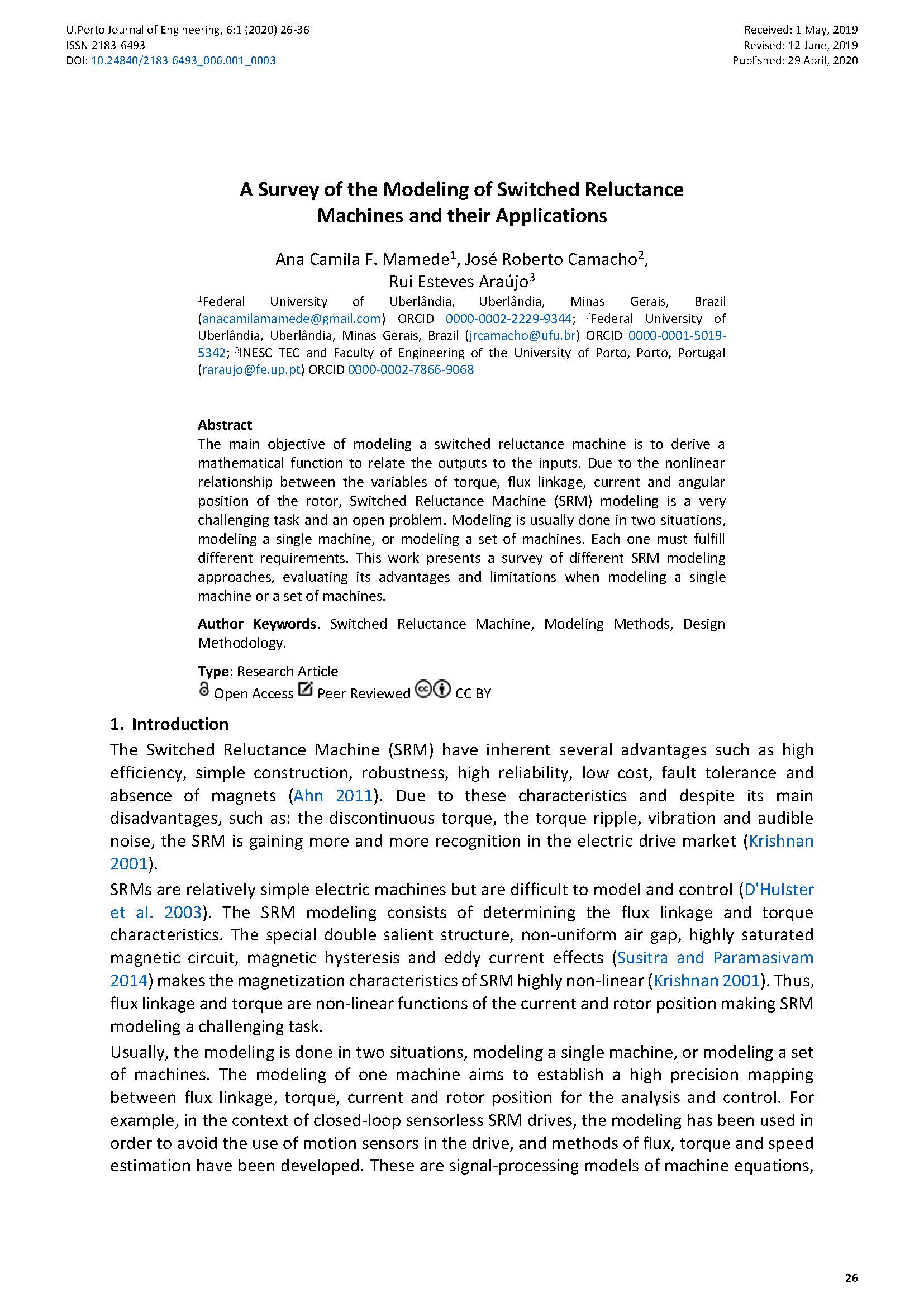A Survey of the Modeling of Switched Reluctance Machines and their Applications
Main Article Content
Abstract
The main objective of modeling a switched reluctance machine is to derive a mathematical function to relate the outputs to the inputs. Due to the nonlinear relationship between the variables of torque, flux linkage, current and angular position of the rotor, Switched Reluctance Machine (SRM) modeling is a very challenging task and an open problem. Modeling is usually done in two situations, modeling a single machine, or modeling a set of machines. Each one must fulfill different requirements. This work presents a survey of different SRM modeling approaches, evaluating its advantages and limitations when modeling a single machine or a set of machines.
Downloads
Download data is not yet available.
Article Details
Authors who publish with this journal agree to the following terms:
- Authors retain copyright and grant the journal right of first publication with the work simultaneously licensed under a Creative Commons Attribution License that allows others to share the work with an acknowledgement of the work's authorship and initial publication in this journal.
- Authors grant the journal the rights to provide the article in all forms and media so the article can be used on the latest technology even after publication and ensure its long-term preservation.
- Authors are able to enter into separate, additional contractual arrangements for the non-exclusive distribution of the journal's published version of the work (e.g., post it to an institutional repository or publish it in a book), with an acknowledgement of its initial publication in this journal.
- Authors are permitted and encouraged to post their work online (e.g., in institutional repositories or on their website) prior to and during the submission process, as it can lead to productive exchanges, as well as earlier and greater citation of published work (See The Effect of Open Access).

